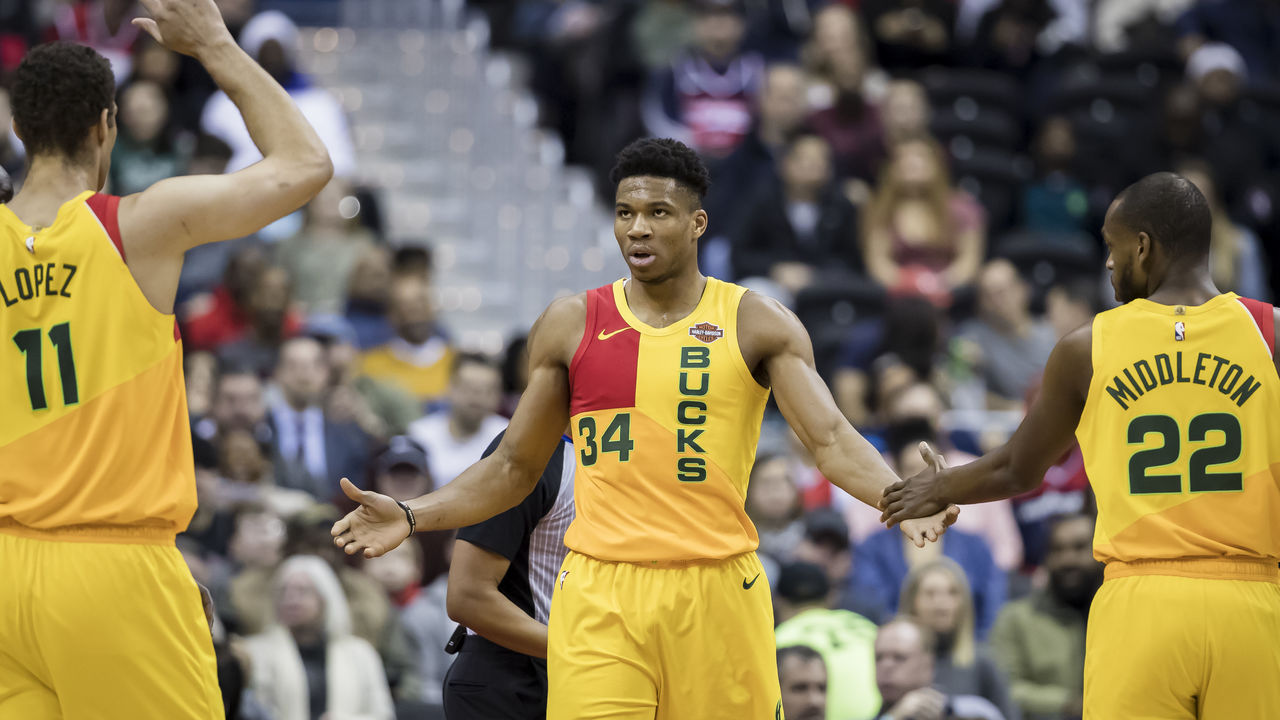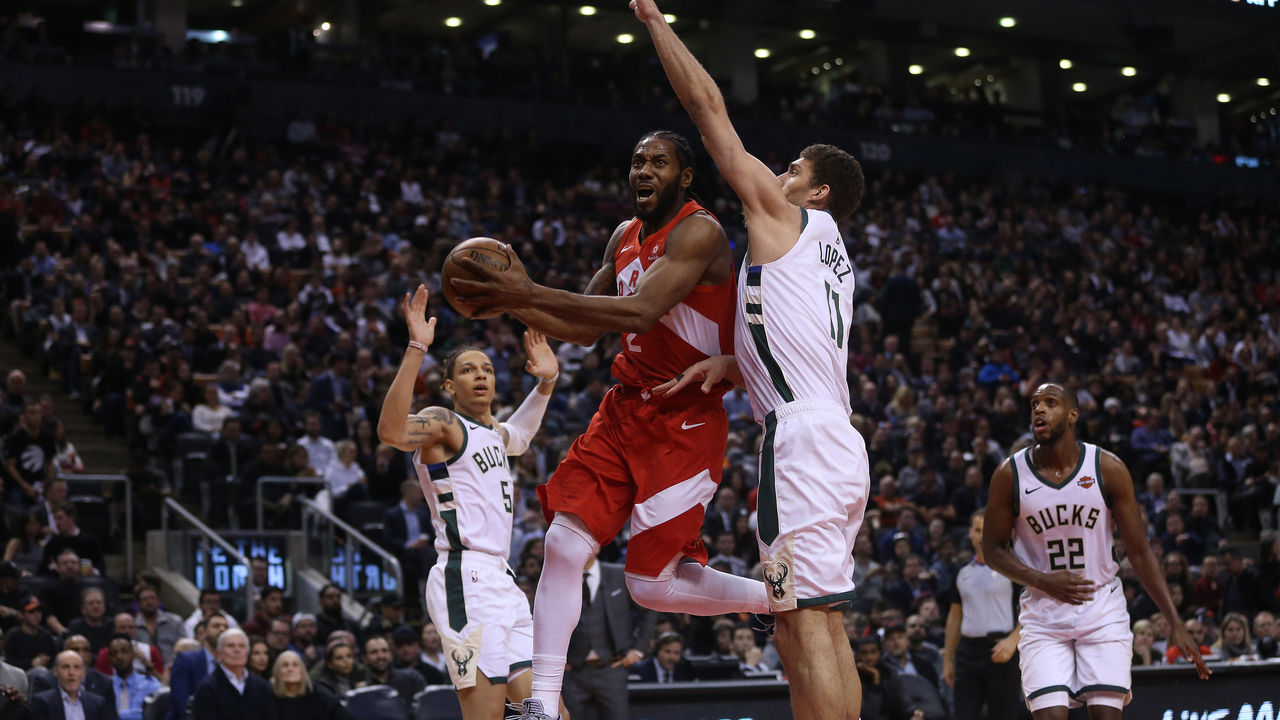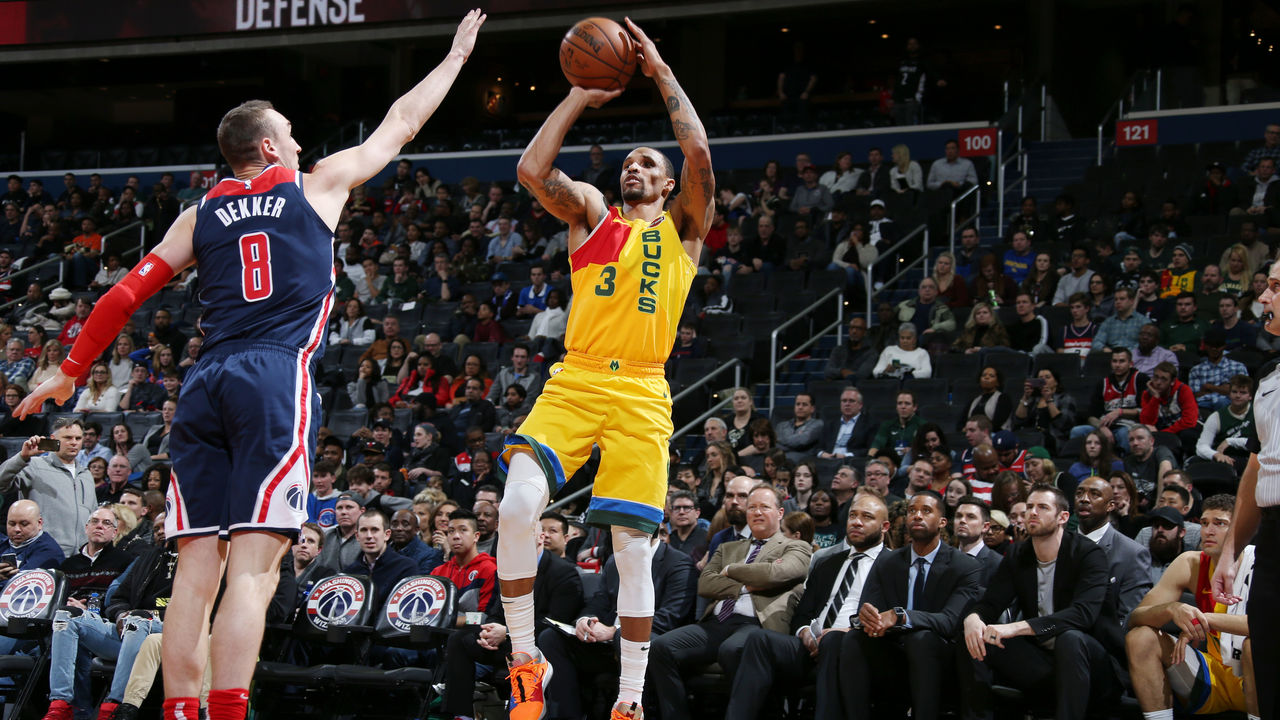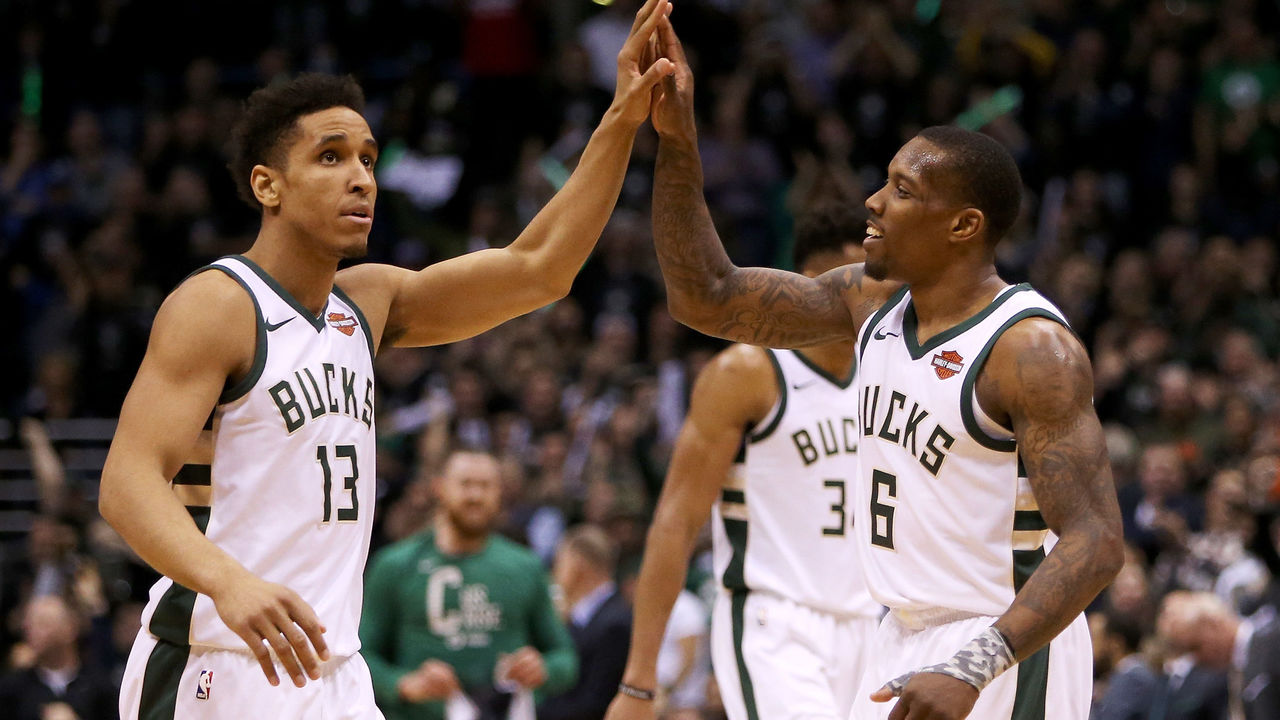In a star-crazed league, the Bucks demonstrate the value of role players
Between Anthony Davis requesting a trade, Kristaps Porzingis getting moved to Dallas, the Knicks opening up two future max-salary slots in the process, and Kyrie Irving walking back his preseason pledge to the Celtics, the NBA went superstar mad last week.
All the while, the Milwaukee Bucks chugged along in their own, quieter corner of the league - until they made an eyebrow-raising appearance as a footnote in the Davis saga on Monday. Alongside the two glamor markets on either coast, Davis reportedly placed Milwaukee on his four-team list he'd be willing to re-sign with in 2020. Whether that leak was genuine or simply a part of a convoluted ploy to put the screws to the Lakers, the message was clear: The Bucks have the look of a sustainable winner. All else being equal, who wouldn't want to play for them?
Perhaps the more interesting angle, though, is this: Would such a trade actually make this year's Bucks better? Would gutting their depth and rejigging their system to pair two freakish (but slightly mismatched) talents bring them closer to a title this season? Would a team that's made its bones with pristine roster balance trade four quarters for a dollar bill?
As things stand, the Bucks own the NBA's best record, defense, net rating (by far), fourth-best offense, and most impressive win profile. With each marquee win, each dominant defensive performance, each blowout that's done and dusted by the third quarter, they've shown us how good they are.
But some doubts do persist, and they are rooted mostly in precedent. The Bucks still haven't won a playoff series during the Giannis Antetokounmpo era - this same core went 44-38 and got bounced by the skeleton Celtics last spring. And, as others have pointed out, the gulf between Antetokounmpo and Milwaukee's next-best player (whether you think that's Khris Middleton, or Eric Bledsoe, or someone else) would be atypical of a title team.

Every organization is a unique organism, and as such, each team that forces its way into championship contention prompts a new consideration of how titles can be won. The Warriors have clouded the picture by making the title chase feel like a one-horse race the last three years, but even absent their dynastic shadow, you'd surely have people asking questions like, "Can you win a championship with only one superstar?" Or, "Can you win a championship if Khris Middleton is your second-best player?" To which the answer ought to be: That depends on who your third- and fourth- and fifth-best players are. It depends on how well all those players complement each other. The context matters.
These Bucks are steamrolling everything in their path, not just because Antetokounmpo is a monster, but because his skill set and that of every player around him is being optimized to its fullest extent. The team found its formula for success by valuing complementary skills over individual ones.
Within the NBA's semantic framework - where concepts like stars, superstars, superteams, and Big Threes have calcified into tenets of championship team-building - the term "role player" has almost become a pejorative. But Milwaukee is demonstrating how much value there is in players who can do a couple specific things extremely well, and who will focus their energy on doing those things rather than trying to take on tasks that others on the roster are better suited for.
There's no better example of that than Brook Lopez, a plodding big man who stands as close as possible to the basket at one end of the floor and as far away from it at the other. Lopez's timely back-line help and elite rim protection has been a huge component of the Bucks' top-ranked defense, and his ability (and willingness) to let it fly from deep has been instrumental in opening up the court for their free-flowing offense. Instead of slowing down their lethal transition attack, he gives them a trigger-happy trailer on the break. His commitment to boxing out has helped them grab defensive rebounds at a league-best rate. It may be strange to see a starting center for a contender averaging just 4.1 rebounds while leading his team in 3-point attempt rate, but in leaning all the way into those highly specialized tasks, Lopez has made himself one of the league's most impactful role players.
"As a team, we know what we are," Lopez told The Toronto Star's Bruce Arthur on Thursday before the Bucks clinched their crucial season series against the Raptors. "Everyone accepts their roles and understand their roles. We're in a good place right now."

The Bucks have created an environment in which players can embrace specialization, and they've done so by constructing a roster and implementing a system in which there is hardly any overlap or redundancy. Everything they do is about symbiosis; one hand constantly washing the other.
Of course, it wouldn't work if the players weren't exceedingly good at their jobs. The way their tough, long, physical guards apply pressure on the perimeter and funnel opposing ball-handlers wherever they decide to funnel them maximizes Lopez's and Antetokounmpo's abilities as interior defenders. The Bucks are the league's stingiest team defending the rim in terms of both volume and efficiency.
Antetokounmpo can't shoot from deep, but make him your primary ball-handler, have him lead the break and declare the painted area his purview alone (he averages nearly three times as many paint touches and post-ups as any other Buck), and his passing vision, on-ball gravity, and relentless rim-running will create open threes for the knock-down, spot-up shooters around him. Antetokounmpo sets the table for his teammates, and they, in turn, clear it for him. The Bucks comfortably lead the league in catch-and-shoot 3-point attempts, as well as points scored in the restricted area. With all their instruments working in harmony, they're able to make opponents dance to their tune.
"Good teams, everybody knows their roles and tries to do them the best they can," George Hill, who came to Milwaukee from Cleveland in a mid-December trade, told theScore.
Hill, who played similarly systematized basketball with the Pacers, Jazz, and Spurs once upon a time, credited Mike Budenholzer, whose overhaul of the Bucks' system has made him a Coach of the Year front-runner in his first season with the team.
"It all starts with the coach," Hill said. "(In Indiana) Frank Vogel gelled us to play together and be one unit. In Utah with Quin Snyder, same thing. Bud, coming from the San Antonio organization, that's how it is: You play for your teammates, have trust, make the extra pass."

Hill's actually been a good test case for the structural integrity of the Bucks' system. He's had his share of offensive struggles since the trade, averaging just six points while shooting 28.6 percent from 3-point range. But as a long-armed, ball-pressuring guard and gravitational spot-up threat with some playmaking chops, he's managed to slide right into their scheme and be a positive contributor. When he's shared the floor with Antetokounmpo, the Bucks have outscored teams by 17.8 points per 100 possessions.
"Take the shots that's there," Hill said of how he views his role with the team. "Bring a defensive mentality to the floor, night in, night out, but also be aggressive taking those shots at the offensive end."
Bledsoe and Brogdon have less narrowly defined roles - they'll actually initiate the offense and take shots off the dribble - but they're similarly focused on carrying out their specific jobs. On offense, that means launching threes or driving to the rim at all costs. They use different means to make their way inside - Bledsoe does it with speed, Brogdon with force - but the benefit of streamlining their games has been evident: Brogdon is currently working on a ridiculous .511/.415/.946 shooting line, while Bledsoe is hitting a career-high (by a mile) 61 percent from inside the arc.
Then, there's Middleton, the Bucks' unassuming first-time All-Star, whose elite skill is that he's good at basically everything. He can run the offense or zip around without the ball, he can spot up or post-up; facilitate, or hunt his own shot; be a man-to-man defensive irritant or a roving free safety. He'll do whatever you need him to, and he'll do it well. It may seem belittling to call an All-Star a gap filler, but malleability is what makes Middleton such a perfect sidekick.
Up and down the roster, the Bucks find ways to make guys useful. Save for Sterling Brown, nobody in their rotation has a negative net rating. What they may lack in stars, they make up for with superstar role players.
The team's chasing them in the Eastern Conference are inherently different. The Philadelphia 76ers have their ballyhooed Big Three in Joel Embiid, Ben Simmons, and Jimmy Butler, but they illuminate each other's shortcomings as much as they highlight each other's strengths.
All season, the Celtics have battled locker-room grumpiness that's stemmed from players' dissatisfaction with their roles.

The Raptors are constructed similarly to the Bucks on paper - with a superstar in Kawhi Leonard, an unconventional second All-Star in Kyle Lowry, and a deep supporting cast - but it's been clear for most of the season that the formula isn't producing the same chemical reaction for them.
You could argue that all three of those teams are as talented or more talented than Milwaukee. But the Bucks, with their complementary skill sets and simplified roles, optimize their talent in a way their conference rivals do not. Which is why, at present, they should be the clear-cut favorites to emerge from the East.
"We definitely have a chance," Hill said, who last year reached the Finals with a Cavaliers team that, while far less defensively capable, orbited LeBron James in much the same way the Bucks do Antetokounmpo. "You really can't compare anyone to LeBron, he's his own thing ... but if we can continue to play together, play defense, stay on the same page, we'll give ourselves a good chance to be playing in late June."
As a purely hypothetical exercise, a Davis trade is fascinating to consider. He and Antetokounmpo could certainly play alongside one another, but they would also invade each other's space and step on each other's toes a bit. Some of the fit issues plaguing those other three teams might creep into Milwaukee.
It will be fun to revisit that hypothetical in the postseason, and (depending on how it plays out) again in the offseason, when Middleton, Bledsoe, Brogdon, and Lopez are all free agents. Can the Bucks afford to bring them all back and lock into this core for the foreseeable future? Can they afford not to? With Antetokounmpo's free agency looming in 2021, those decisions are going to be massively consequential one way or another. The playoffs will reveal a lot about the viability of their approach.
For now, if you peruse the league landscape, you'd be hard-pressed to find a team better positioned to win a ring in a post-Durant-Warriors world. They may not have a Big Three or even a Big Two, but they have about 10 puzzle pieces that snap together perfectly to make a Big Whole. We'll soon find out if that's enough.